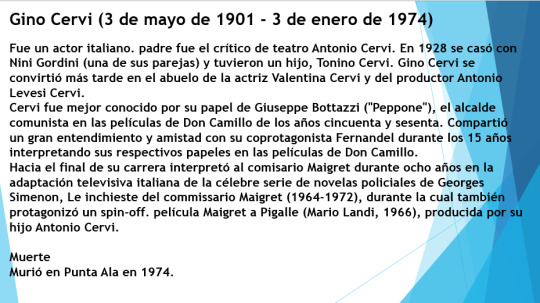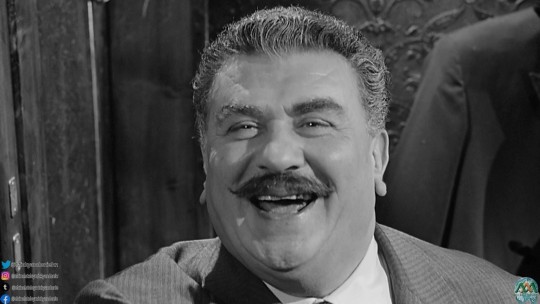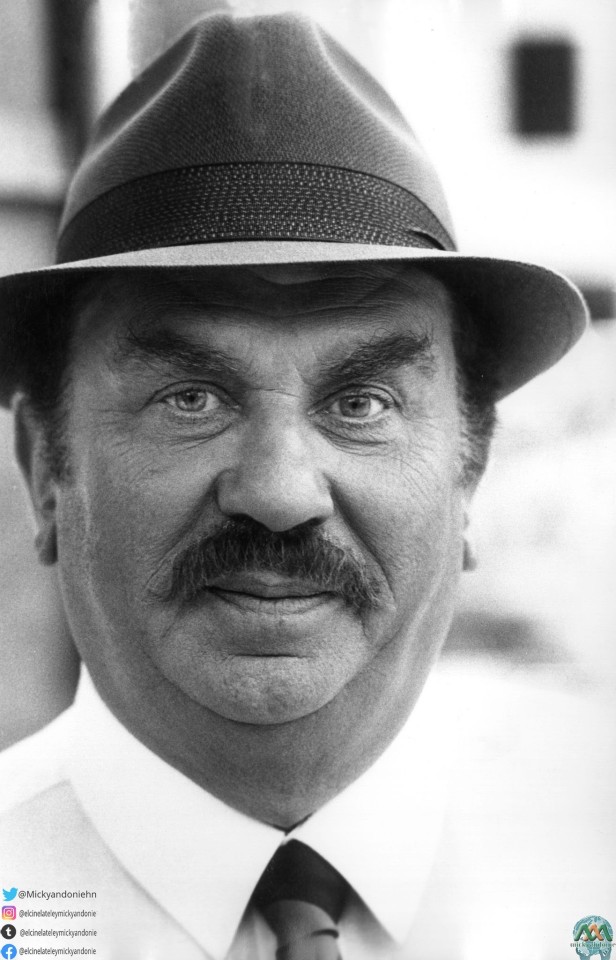#Anna Bottazzi
Explore tagged Tumblr posts
Text
Dopo averne ammirato sul palco del Teatro Vascello per Teatri di Vetro i quadri Contemplazione e Il Dono, scopriamo a Santarcangelo Festival l’esito finale del progetto Prometeo firmato da Simona Bertozzi e Nexus, And it burns, burns, burns.
Quello di Prometeo può essere considerato l’antecendente, nonché speculare, versione pagana del mito cristiano del peccato originale, l’analogo racconto di come l’essere umano si fece autocoscienza con l’affermazione del valore della conoscenza.
La téchne, cessando di essere un privilegio divino, divenne patrimonio esclusivo dell’homo sapiens e caratterizzò il dominio razionale sul mondo naturale nel senso del possesso materiale, mentre la primordiale sfida all’autorità e la conseguente punizione coincisero col sorgere nella coscienza di quella distinzione tra bene e male, che l’azione millenaria della Gente del Libro lasciò degenerare nella percezione di una connaturata imperfezione e di un perenne stato di senso di colpa che ogni individuo avrebbe dovuto espiare.
Conseguenza di quel primo atto culturale – che, come fil rouge, lega in un ossimoro la cognizione di Prometeo all’ingenuità di Adamo ed Eva – fu dunque una drammatica consapevolezza: a ogni tentativo di ribellione sarebbe seguita una reazione uguale e contraria da parte di chi avrebbe dovuto proteggere tale supremazia, ieri gli dèi o Dio, oggi le élite e un biopotere impersonale, diffuso e incontestabile.
La mitologia di Prometeo è, allora, una narrazione ben più problematica di quanto possa apparire rispetto alla vulgata che interpreta unilateralmente il Titano – colui che, insegnando agli uomini la tecnica, li rese «da infanti quali erano, razionali e padroni della loro mente» (Prometeo incatenato, Eschilo) – nelle vesti di un rivoluzionario ante litteram.
Nonostante l’arte del corpo sia probabilmente più appropriata di quella del testo, perché supera le problematiche relative al tradimento linguistico affidandosi a una grammatica di gesti e fisicità, tradurre in danza la complessità di un mito fondativo dell’Occidente non è facile, ma Simona Bertozzi in And it burns, burns, burns mantiene splendidamente le originarie intenzioni libertarie di «Prometeo, il dio crocifisso per aver amato troppo gli uomini» (Simone Weil), coreografando un’autentica tragedia sulla quale sarà impossibile meditare senza avvertire di quella disobbedienza tanto un’aura di cupo timor dei quanto la controversa affermazione di un atto di forza necessario per un «uomo che non ha in sé alcuna responsabilità, dato che all’origine dell’errore e del peccato è il suo creatore», «perché, quando ingiuriamo il cielo, lo facciamo in virtù del diritto di colui che porta sulle spalle il fardello di un altro» (Lacrime e santi, Emil Cioran).
E, allora, sofferenza e solitudine, solennità e vitalismo si disvelano nella strenua ricerca di equilibrio di Anna Bottazzi, Arianna Ganassi, Giulio Petrucci, Aristide Rontini e Stefania Tansini, e nel moto perenne che attraversa quadri densi di variazioni sul tema della completezza della circolarità di And it burns, burns, burns, con Prometeo che asseconda il proprio travaglio facendosi uno e trino nell’intreccio narrativo, mentre una tensione vibrante e mai completamente pacificata diventa, infine, speranza e possibile apertura affinché il destino della tecnica non sia necessiariamente quello consegnare alle future generazioni un mondo in macerie.
Simona Bertozzi costruisce il lavoro coreografico senza ingabbiarlo, rendendo continuamente sfuggenti «le traiettorie su cui si innesterà l’intero percorso, scandendo le tappe di un possibile dialogo tra età, intenti e proiezioni», ed esalta la qualità dell’ensemble grazie alla presenza di danzatori adolescenti dalla sconcertante personalità scenica e senza dover ricorrere a strumentali sporcature nella precisione del gesto, ma conservando la dolcezza dei sollevamenti e la bellezza delle figure.
In questo And it burns, burns, burns, il fuoco – che accompagna l’articolato sorgere dell’anima umana – e il convincente impianto musicale di Francesco Giomi contribuiscono a comporre con omogeneità i vari quadri, a tradurre la danza in un’idea chiara e coerente in grado di legare intenzione ed esecuzione artistica.
Senza forzare la ricerca in una sterile originalità, l’esito cui Simona Bertozzi giunge è allora superbo con il segno plastico disegnato nello spazio capace di restituire senso figurativo al vuoto, donare alla forma la sostanza del concetto e sublimare il mito a materia di cui è fatta la realtà.
Un risultato espressivo coinvolgente e fisicamente intenso, preciso e poetico senza inutili virtuosismi per rappresentare un genere umano, il cui «orizzonte resta sospeso tra possibilità di caduta o elevazione» (ndr), e che «ha gioito troppo poco: solo questo, fratelli, è il nostro peccato originale» (Così parlò Zarathustra, Friedrich Nietzsche).
#gallery-0-3 { margin: auto; } #gallery-0-3 .gallery-item { float: left; margin-top: 10px; text-align: center; width: 20%; } #gallery-0-3 img { border: 2px solid #cfcfcf; } #gallery-0-3 .gallery-caption { margin-left: 0; } /* see gallery_shortcode() in wp-includes/media.php */
La coreografia è andata in scena all’interno di Santarcangelo Festival ITC Molari via Felice Orsini 19, Santarcangelo di Romagna (RN)
And it burns, burns, burns progetto Simona Bertozzi, Marcello Briguglio ideazione e coreografia Simona Bertozzi interpreti Anna Bottazzi, Arianna Ganassi, Giulio Petrucci, Aristide Rontini, Stefania Tansini musica Francesco Giomi luci Simone Fini costumi Cristiana Suriani organizzazione Beatrice Capitani produzione Nexus 2016 con il contributo di Mibact e Regione Emilia Romagna-Fondo di Sostegno alla produzione e distribuzione della Danza d’Autore Regione Emilia-Romagna 2015/2016 con il sostegno di Fondazione Nazionale della Danza / Aterballetto Centro di Produzione in collaborazione con ATER Circuito Multidisciplinare dell’Emilia Romagna, Armunia Festival Costa degli Etruschi, Santarcangelo dei Teatri
And it burns, burns, burns / Santarcangelo Festival Dopo averne ammirato sul palco del Teatro Vascello per Teatri di Vetro i quadri Contemplazione e…
#Anna Bottazzi#Arianna Ganassi#Aristide Rontini#Francesco Giomi#Giulio Petrucci#Marcello Briguglio#Nexus#Recensione And it burns burns burns#Recensione Prometeo#Santarcangelo dei teatri#Santarcangelo Festival#Simona Bertozzi#Simona Bertozzi/Nexus#Stefania Tansini
0 notes
Text










Gino Cervi.
Filmografía
La flota azul (1932)
Frontiere (1934)
Los dos sargentos (1936) - Comandante Federico Martelli / Sargento Guglielmo Salvoni
Aldebarán (1936) - Cmdr. Corrado Valeri
Amore (1936) - Paolo Venieri
Gli uomini non sono ingrati (1937) - Ferencz Korvat
Voglio vivere con Letizia (1938) - Bebe
L'argine (1938) - Zvanì
Ettore Fieramosca (1938) - Ettore Fieramosca
Inventiamo l'amore (1938) - Carlo Morelli
Los hijos del marqués Lucera (1939) - Ermanno
Un'avventura di Salvator Rosa (1939) - Salvador Rosa, il "Formica"
El pecador (1940) - Alberto
Una romantica avventura [ it ] (1940) - Luigi
Melodías eternas (1940) - Wolfgang Amadeus Mozart
Il sogno di tutti (1940) - El padre del bebé
La corona de hierro (1941) - Rey Sedemondo de Kindaor
El prometido (1941) - Renzo Tramaglino
L'ultimo addio (1942) - Doctor Gino Landi
La Reina de Navarra (1942) - Carlo Vº
Don Cesare di Bazan (1942) - Don Cesare de Bazán
Torrentes de primavera (1942) - Francesco
Quarta pagina (1942) - Ex preso
Cuatro pasos en las nubes (1942) - Paolo Bianchi
Gente dell'aria (1943) - Capitán Pietro Sandri
Amores tristes (1943) - Giulio Scarli
T'amerò semper (1943) - Mario Fabbrini
El tabernero (1944) - El poeta
Vivere ancora (1945)
Quartetto pazzo (1945) - Roberto
Qué familia distinguida (1945) - Michele Montischi
Mi viuda y yo (1945) - Sr.Guglielmi
Su joven esposa (1945) - Caballero comandante Francesco Battilocchio
Un uomo ritorna (1946) - Sergio Tibaldi
Malìa (1946) - Don Alfonso
L'angelo e il diavolo (1946) - Giulio Serra
Águila negra (1946) - Kirila Petrovic
Umanità (1946)
Noticias del crimen (1947)
Furia (1947) - Oreste
Daniele Cortis (1947) - el marido de Elena
Yo miserabili (1948) - Jean Valjean
Anna Karenina (1948) - Enrico
Fabiola (1949) - Quadratus
Guillermo Tell (1949) - Guillermo Tell
La llama que no morirá (1949) - Luigi Manfredi
La novia no puede esperar (1949) - Anselmo Brunelli
Yvonne de la noche (1949) - Colonnel Baretti
Il cielo è rosso (1950)
Mujeres sin nombres (1950) - MP Sergeant Pietro Zanini
Historia de una historia de amor (1950)
Sigillo rosso (1950)
Il caimano del Piave (1951) - Coronel de Torrebruna
El Cristo Prohibido (1951) -El sacristán
Cameriera bella presenza offresi.
OK Nerone (1951) - Nero
Hola elefante (1952) - Narrador
Don Camillo (1952) - Giuseppe 'Peppone' Bottazzi
Esposa por una noche (1952) - Count D'Origo
Tres historias prohibidas (1952) - Prof. Aragona (Tercer segmento)
La reina de Saba (1952) - Rey Salomón de Jerusalén
La scogliera del peccato (1952)
La dama sin camelias (1953) - Ercole 'Ercolino' Borra
Estación terminal (1953) - Comisionado de policía
El regreso de Don Camillo (1953) - Giuseppe 'Peppone' Bottazzi
Nero y el incendio de Roma (1953) - Nero
Les Trois Mousquetaires (1953) - Porthos
La Dame aux camélias [ fr ] (1953) - Monsieur Duval
Cavallina storna (1953) - Ruggero Pascoli
Asuntos reales en Versalles (1954) - Cagliostro
Maddalena (1954) - Don Vincenzo
Il cardinale Lambertini [ it ] (1954) - Cardenal Lambertini
Una mujer libre (1954) - Knight Commander Massimo Marchi
La grande avventura (1954)
Adiós, mi bella dama (1954) - Conde Riccardo Salluzzo
Frou-Frou (1955) - Príncipe Vladimir Bilinsky
Non c'è amore più grande (1955)
La última ronda de Don Camillo (1955) - Giuseppe 'Peppone' Bottazzi
Il coraggio (1955) - Comm. Aristide Paoloni
Amor salvaje (1956) - Sor Cesare
Guardia, guardia scelta, brigadiere e maresciallo (1956) - Marshall
Beatrice Cenci (1956) - Francesco Cenci
Esposas y obscuridades (1956) - John Cattabriga
Guerrero del desierto (1957) - Ibrahim
Atrapado en Tánger (1957) - Prof. Bolevasco
Le belle dell'aria (1957) - Don Fogazza
Amore e chiacchiere (Salviamo il panorama) (1958) - Paseroni
El pasado te acusa (1958) - Comisario
Sans famille [ fr ] (1958) - Vitalis
La maja desnuda (1958) - Rey Carlos IV de España
Nel Segno di Roma (1959) - Aureliano - Emperador de Roma
Le Grand Chef (1959) - Paulo
La Capilla Negra (1959) - El comisario de policía Ferrari
Vacaciones en Mallorca (1959) - André Breton
El empleado (1960) - King Lear (sin acreditar)
David y Goliat (1960) - Rey Saúl (voz, sin acreditar)
Asedio de Siracusa (1960) - Gerome
Señora del mundo (1960) - Profesor Johanson
Larga noche en 1943 (1960) - Carlo Aretusi alias "Sciagura"
Le olimpiadi dei mariti (1960) - Director del periódico
Femmine di lusso (1960).
HONDURASQUEDATEENCASA
#ELCINELATELEYMICKYANDONIE
1 note
·
View note
Photo

The two of Villa Torlonia Museums are the Casino Nobile and the hoot of owls and are part of the System of Museums in the City of Rome.
The Casino Nobile owes its appearance to, around 1802, by Giuseppe Valadier, later, between 1835-40, that of Giovan Battista Caretti who added the facade’s majestic porch.
Many artists worked on the decoration, which Podesti and Coghetti, as well as sculptors and plasterers of Thorvaldsen and Canova school.
When, from 1925 to 1943, the villa was rented to Benito Mussolini, who used it in his private residence in the basement were built a gas shelter and an air-raid shelter, visited by appointment.
The restored building is home to two representative plans the Villa Museum, with sculptures and antique furniture. On the second floor there is the Museum of the Roman School (opening soon), with paintings, sculptures and drawings of the artists of that, considered among the most interesting and bustling of the figurative research in the period between the First and Second World War, the current also known under the name of Scuola Romana.
The adjacent Casino dei Principi, where he consulted the Archive of the Roman School, rich in documents periodically hosts temporary exhibitions.
The hoot of owls stands out for its originality. Conceived in 1839 by Giuseppe Jappelli as “Swiss Hut”, it was transformed in the early twentieth century eclectic villa, residence of Prince Torlonia. His name is linked to the use of decorative elements inspired by the theme of the owl. The many stained glass windows present were made largely by Cesare Picchiarini between 1910 and 1925, to designs by Duilio Cambellotti, Umberto Bottazzi, Vittorio Grassi and Paul Paschetto.
Since opening to the public in 1997 as a museum space, the original collection of the Lodge has been enriched with stained glass windows by the same authors and with drawings, sketches and cartoons.
var quads_screen_width = document.body.clientWidth; if ( quads_screen_width >= 1140 ) { /* desktop monitors */ document.write('<ins class="adsbygoogle" style="display:inline-block;width:468px;height:60px;" data-ad-client="pub-9117077712236756" data-ad-slot="9839843423" >'); (adsbygoogle = window.adsbygoogle || []).push({}); }if ( quads_screen_width >= 1024 && quads_screen_width < 1140 ) { /* tablet landscape */ document.write('<ins class="adsbygoogle" style="display:inline-block;width:468px;height:60px;" data-ad-client="pub-9117077712236756" data-ad-slot="9839843423" >'); (adsbygoogle = window.adsbygoogle || []).push({}); }if ( quads_screen_width >= 768 && quads_screen_width < 1024 ) { /* tablet portrait */ document.write('<ins class="adsbygoogle" style="display:inline-block;width:468px;height:60px;" data-ad-client="pub-9117077712236756" data-ad-slot="9839843423" >'); (adsbygoogle = window.adsbygoogle || []).push({}); }if ( quads_screen_width < 768 ) { /* phone */ document.write('<ins class="adsbygoogle" style="display:inline-block;width:468px;height:60px;" data-ad-client="pub-9117077712236756" data-ad-slot="9839843423" >'); (adsbygoogle = window.adsbygoogle || []).push({}); }
Villa Torlonia, the most recent of the villas belonging to Rome’s nobility, still retains a particular fascination due to the originality of its English-style garden (one of the few examples in the city), and to the unexpectedly large number of buildings and garden furniture in the grounds.When Giovanni Torlonia inherited the title of Marchese in 1797, to confirm his new status he purchased Villa Colonna (formerly Villa Pamphilj) on Via Nomentana and commissioned Giuseppe Valadier to renovate the property to raise it to the standard of the other villas belonging to noble families in Rome. Between 1802 and 1806 Valadier turned the main building into an elegant palace, transformed the small Casino Abbati into a very gracious palazzina (today the Casino dei Principi), and built the Stables and an imposing entrance (demolished when the Via Nomentana was widened). He also laid out the park with symmetrical, perpendicular avenues around the palace, and the view to the north from the building in line with one of the entrances to the Villa from Via Nomentana. Numerous works of Classical art, many of which were sculptural, were purchased to furnish the Villa. Following the death of Giovanni, in 1832 his son Alessandro commissioned the painter and architect Giovan Battisti Caretti to enhance and increase the size of the property. In addition to enlarging the size of the buildings, Caretti constructed several features in the park to suit the eclectic taste of the Prince: these were the False Ruins, the Temple of Saturn, the Tribuna con Fontana, an Amphitheatre, the Coffee-house, and the Chapel of Sant’Alessandro (the last three no longer exist).To plan and carry out the works inside the Villa, Alessandro employed two other architects: Quintiliano Raimondi for the Theatre and Orangery (today more commonly known as the Lemon-house), and Giuseppe Jappelli, who was in charge of the entire south section of the Villa. This area was completely transformed with winding avenues, small lakes, exotic plants and decorated with buildings and outdoor furniture of unusual taste: the Swiss Hut (later transformed into the Casina delle Civette), the Conservatory, the Tower and Moorish Grotto, and the Tournament Field. The huge self-celebratory project culminated in 1842 with the erection of two pink granite Obelisks that commemorated Alessandro’s parents, Giovanni and Anna Maria Torlonia.Yet despite the work and effort expended, Villa Torlonia was only on a few occasions the setting for magnificent social events for high-ranking foreign and Roman nobles that Alessandro had hoped for. In an attempt to relaunch the splendour of the family name, his heir, another Giovanni, built the Medieval House, another enclosure wall, the Red House, and the Watchman’s House at the entrance on Via Spallanzani, and he radically transformed the Swiss Hut to turn it into the current Casina delle Civette. The new buildings were for the most part designed to be lived in. In 1919 a large underground Jewish cemetery was discovered in the north-west area of the grounds. In 1929 it became the house of Mussolini and his family, where he remained until 1943. The presence of the Duce did not bring substantial modifications: he lived in the Palace and used the Medieval House and the Lemon-house to show films and hold parties and cultural meetings. And a tennis court was set up on the Tournament Field. Nor did the Park undergo changes, with the exception of the creation of vegetable gardens during the war at the instigation of Mussolini’s wife. In June 1944 the entire property was occupied by the Allied High Command which remained there until 1946. The Villa was bought by the Municipality of Rome in 1977 and a year later it was opened to the public. A series of restoration projects was initiated in the 1990s in both the park and buildings: first the Casina delle Civette, then the Casino dei Principi, the southern section of the park, the Red House, and more recently the Lemon-house, Medieval House, Casino Nobile, Old Stables, and the north section of the park. With the opening of the theatre in December 2013, and with the upcoming openings of the greenhouse and Moorish tower, which have already been restored, Villa Torlonia will return to its former glory.
Musei di Villa Torlonia Roma, Italy was originally published on HiSoUR Art Collection
0 notes